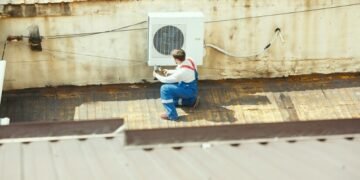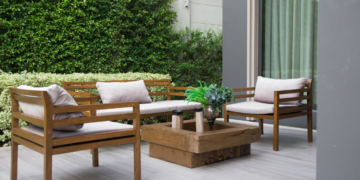Everyone deserves a good night’s rest after a long day, and the mattress, pillows, and quilt play an essential role in that. The quality of a person’s sleep will be determined by the amount of comfort these components provide. A 60-degree Fahrenheit year-round average in Australia makes blankets an excellent choice for bedding. Many quilts exist, including the Australian wool quilt and the cotton quilt, and making a decision may be challenging. To assist you, we’ve put together this buyer’s guide.
The Quilt’s Dimensions
Cover your whole bed with a blanket or duvet (single, double, queen or king). If you and your spouse have a habit of fighting over the bed linens, some experts advocate purchasing an Australian wool quilt or doona that is bigger than the size of your mattress.
Channelled or boxed quilts are the two most common methods of enclosing a quilt. Because the channels are sewn in straight lines from top to bottom, you may reposition the filling by compressing or pushing it down the channels with your hands to meet your heating needs. The filling is more evenly distributed in boxed quilts since the squares are sewn together.
Loft
The ‘fluffiness’ or ‘density of a quilt or doona is its loft. It is possible to get a small quilt or a thick one. Having a more excellent loft means that your doona will be softer and fluffier.
- Two blankets would be made from a light loft of 300 GSM.
- Three blankets, or 450 GSM, is a high loft.
- It’s the same density as 500 GSM or five high loft insulating blankets.
Filling
Buying a doona or a quilt is vital if you want to know what’s within. In the end, the quality of your sleep relies on how well your blanket regulates your body temperature. Dental fillings might trigger allergies, so choose carefully.
Australian wool quilt
Wool is a traditional fabric for high-loft quilts. With its ability to keep the wearer warm and dry, wool creates an excellent microclimate for regulating body temperature and moisture. As a consequence, it’s a beautiful choice for couples with varying body temperature preferences.
Check whether the filling has been treated to solve this problem since wool is not naturally hypoallergenic. Wool quilts may only be cleaned with wet cleaning. The care instructions should be read before purchase.
Feather
Duck feathers are a popular choice for those who want a warm and cosy night’s sleep without sacrificing their loft.
Perspiration is further reduced by the use of down, which is a natural insulator. As a general rule, the more feathers and down you use in manufacturing an Australian wool quilt or doona, the softer and warmer it will be. They are often boxed to keep the down evenly distributed throughout the fabric, making them more comfortable.
Feather blankets and doonas, like down, seem to be heavier. They are recognised for their warmth and cosiness among those who suffer from allergies.
Cotton
Cotton’s capacity to wick away moisture makes it ideal for hotter climates. In addition, as it is made of natural fibres, it may be washed in a washing machine.
Synthetic
Humans produce synthetic fibres, such as polyester and microfibres, which are used to produce textiles. Polyester’s low-maintenance and high-loft properties have made it a popular choice. Unlike polyester, microfibre offers a more delicate and down-like texture.
If you intend on doing a lot of cleaning, synthetic-material quilts may be washed in the washing machine and dried rapidly. Additionally, they’re hypoallergenic and odourless. Natural fibres are more costly than synthetic fibres, but they endure longer.










